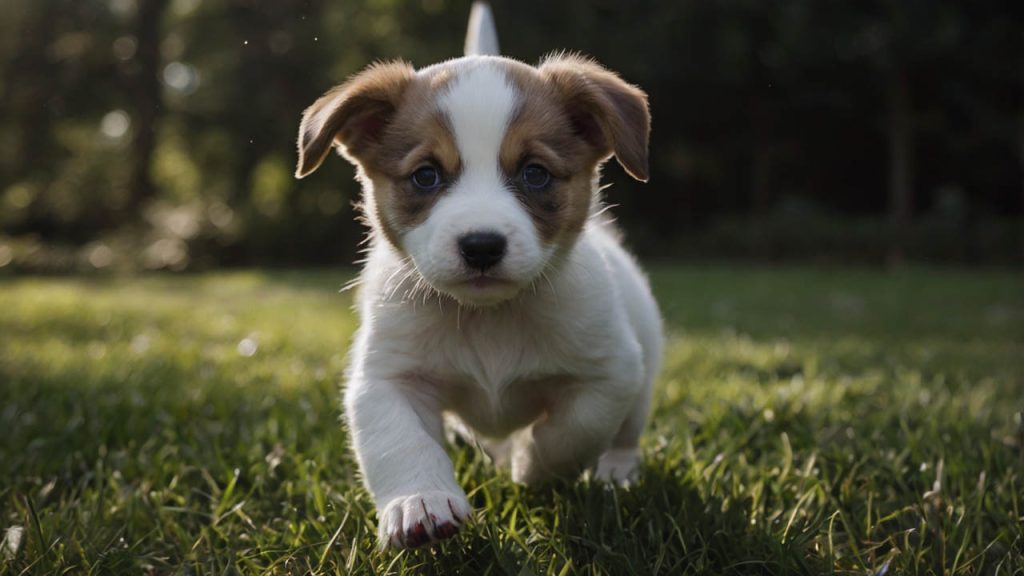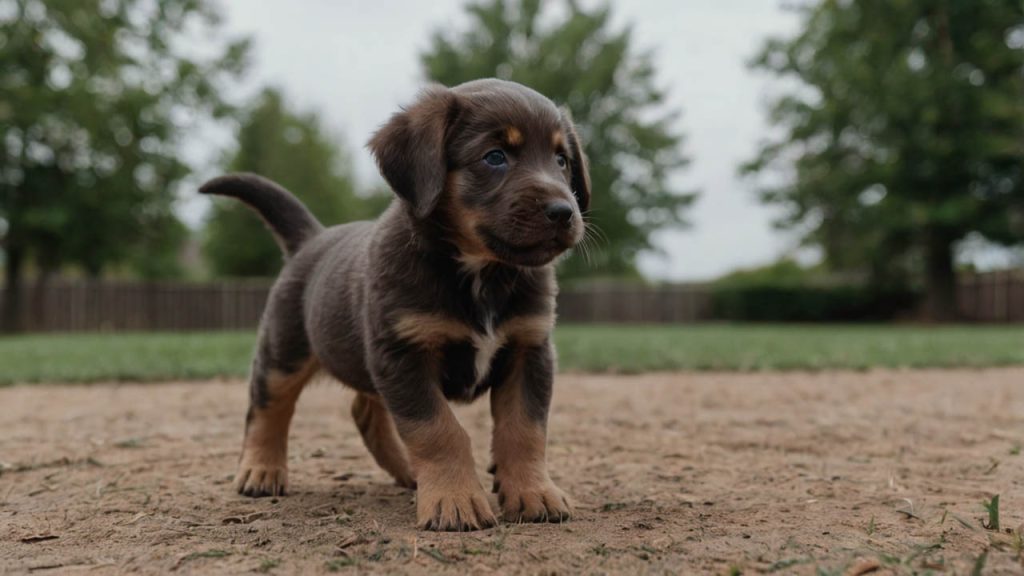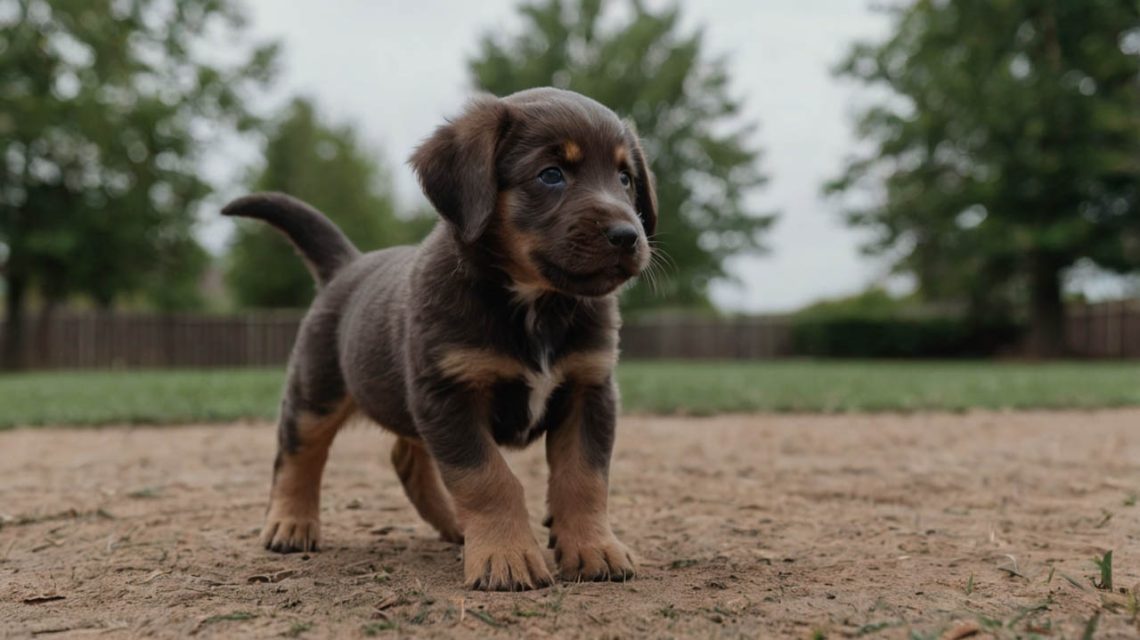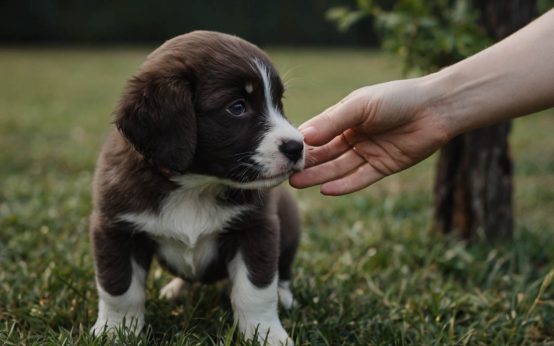Introduction: Start Your Puppy’s First Trick Journey
Learning how to teach a puppy to shake marks an exciting milestone in your young dog’s development and training journey. This adorable trick not only impresses family and friends but also establishes crucial foundations for obedience, socialization, and cognitive development during your puppy’s critical learning period. Moreover, puppies between 8-16 weeks old possess remarkable neuroplasticity, making them incredibly receptive to new commands and behaviors.
When you understand how to teach a puppy to shake using positive reinforcement methods, you’re capitalizing on your puppy’s natural eagerness to learn and please. According to American Veterinary Society of Animal Behavior, puppies trained with reward-based methods during their socialization period show 73% better retention of learned behaviors throughout their lives. Furthermore, teaching this simple trick strengthens the human-animal bond during the crucial imprinting phase that shapes your puppy’s future personality and behavior patterns.
Successfully mastering how to teach a puppy to shake requires understanding puppy-specific learning patterns, attention spans, and developmental stages. Research from the University of Pennsylvania School of Veterinary Medicine demonstrates that puppies learn best through short, frequent sessions combined with immediate rewards and enthusiastic praise. Therefore, this comprehensive guide provides age-appropriate techniques that respect your puppy’s physical and mental development while ensuring enjoyable, effective training experiences.
Why Teaching Your Puppy to Shake Matters for Development
Building Neural Pathways Through Early Trick Training
Understanding how to teach a puppy to shake contributes significantly to your puppy’s neurological development during the critical socialization window. Between 3-14 weeks, puppies’ brains undergo rapid synaptogenesis, forming millions of neural connections that determine future learning capacity. Subsequently, introducing structured training during this period enhances cognitive function and problem-solving abilities throughout your dog’s life.
The physical coordination required for shaking helps develop proprioception—your puppy’s awareness of body position and movement. Young puppies often appear clumsy because their proprioceptive systems remain underdeveloped. Furthermore, practicing the shake command improves balance, muscle control, and spatial awareness essential for athletic development and injury prevention.
Teaching tricks like shaking stimulates multiple brain regions simultaneously. The motor cortex processes physical movements, while the prefrontal cortex handles impulse control and decision-making. Additionally, the limbic system engages through positive emotional associations with training. This multi-regional activation creates robust learning that transfers to other training contexts.

Socialization Benefits When Teaching Puppies to Shake
Mastering how to teach a puppy to shake provides controlled socialization opportunities crucial for behavioral development. Puppies who learn polite greeting behaviors before 16 weeks show 60% fewer behavioral problems as adults, according to veterinary behaviorist research. Moreover, the shake command offers appropriate interaction alternatives to jumping, nipping, or excessive excitement.
Veterinary visits become significantly less stressful when puppies comfortable with paw handling. Regular shake practice desensitizes puppies to foot manipulation, preparing them for nail trims, paw examinations, and medical procedures. Consequently, veterinarians report that dogs trained to shake as puppies display 40% less anxiety during routine examinations.
The confidence gained through successful trick learning extends beyond training sessions. Puppies who master commands early develop greater resilience to novel situations and environmental changes. Furthermore, this self-assurance reduces fear-based aggression and anxiety disorders common in under-socialized dogs.
How to Teach a Puppy to Shake: Age-Appropriate Preparation
Understanding Puppy Development Stages
Before beginning how to teach a puppy to shake training, recognize your puppy’s developmental capabilities:
8-10 weeks old: Puppies possess 5-minute attention spans and limited motor control. Focus on gentle paw handling and positive associations rather than formal commands. Furthermore, this age requires frequent potty breaks that interrupt training sessions.
10-12 weeks old: Coordination improves, allowing basic trick training. Puppies can concentrate for 7-10 minutes but need frequent play breaks. Additionally, teething discomfort may affect focus, requiring patience and flexibility.
12-16 weeks old: Optimal learning period for complex behaviors like shaking. Attention spans extend to 10-15 minutes with proper motivation. Moreover, social awareness peaks, making puppies highly responsive to praise and rewards.
16-20 weeks old: Adolescent independence emerges, potentially challenging established behaviors. Consistent practice prevents regression while maintaining training momentum. Therefore, increase difficulty gradually to maintain engagement.
Essential Supplies for Puppy Shake Training
Proper equipment ensures success when learning how to teach a puppy to shake:
Puppy-appropriate treats should be soft, small, and highly palatable. Choose options like freeze-dried chicken, cheese pieces, or commercial puppy training treats. Furthermore, treats should comprise no more than 10% of daily caloric intake to prevent nutritional imbalances.
Treat pouch keeps rewards accessible without fumbling. Position at hip level for smooth delivery that maintains training flow. Additionally, pouches prevent puppies from fixating on treat locations rather than commands.
Non-slip training mat provides stability for young puppies learning balance. Slippery surfaces increase difficulty and risk of injury during paw lifting. Moreover, designated training mats help puppies understand when formal training begins.
Puppy-safe sanitizer maintains hygiene during frequent treat handling. Young puppies have developing immune systems requiring extra cleanliness precautions. Subsequently, wash hands before and after training sessions.
Step-by-Step Guide: How to Teach a Puppy to Shake
Phase 1: Creating Positive Paw Associations
Begin how to teach a puppy to shake by establishing comfort with paw handling. Sit on the floor at your puppy’s level, creating a non-threatening training position. Gently touch your puppy’s front paws while offering treats and calm praise. Furthermore, keep initial sessions under 3 minutes to prevent overwhelming young puppies.
Progress to lifting paws slightly off the ground. Support your puppy’s elbow while raising their paw one inch, immediately rewarding with treats. Additionally, use a cheerful voice saying “good puppy” to create positive associations. Repeat this process 5-10 times per session, always ending on successful attempts.
Introduce the concept of paw movement without commands. Hold a treat in your closed fist near your puppy’s chest, encouraging natural pawing behavior. Subsequently, the moment your puppy’s paw touches your hand, open your fist and deliver the treat with enthusiastic praise.
Phase 2: Teaching the Shake Command to Your Puppy
Once your puppy comfortably offers their paw, introduce the verbal cue “shake.” Say the command clearly before presenting your closed fist, creating word-action associations. Moreover, maintain consistent pronunciation and enthusiastic tone that captures your puppy’s attention.
Practice command recognition through repetition sets. Conduct five repetitions followed by 30-second play breaks, preventing mental fatigue. Furthermore, varying between training and play maintains your puppy’s enthusiasm and focus throughout sessions.
Begin fading the lure gradually over multiple sessions. Start with treats in your hand for 80% of attempts, reducing to 60%, then 40% over three days. Additionally, reward from your opposite hand or treat pouch, teaching that shaking produces rewards regardless of visible treats.
Phase 3: Refining Your Puppy’s Shake Technique
Perfect the shake duration appropriate for your puppy’s age. Eight-week-old puppies manage 1-second holds, while 16-week-old puppies handle 3-4 seconds comfortably. Furthermore, gentle holding teaches patience without causing frustration or discomfort.
Introduce the release cue “okay” or “free” signaling shake completion. Clear endpoints prevent confusion and establish behavior boundaries. Moreover, consistent release cues transfer to other commands, creating comprehensive obedience structure.
Add gentle handshake motions while holding your puppy’s paw. Start with minimal movement, gradually increasing to normal handshake motions. Subsequently, this prepares puppies for varied human interactions and builds confidence with different handling styles.

Advanced Techniques: How to Teach a Puppy to Shake Like a Pro
Teaching Differentiation Between Paws
Expand how to teach a puppy to shake training by teaching paw discrimination. Introduce “shake” for the right paw and “other paw” for the left. Furthermore, this cognitive challenge enhances problem-solving abilities while doubling your puppy’s trick repertoire.
Use body positioning to encourage specific paw use. Position yourself slightly left to encourage right paw use, and vice versa. Additionally, reward only correct paw attempts while maintaining patience during the learning process.
Practice random alternation between paws once both commands achieve 80% reliability. Avoid predictable patterns that allow anticipation rather than genuine command comprehension. Moreover, mixing commands with other known behaviors maintains mental engagement.
Troubleshooting Common Puppy Training Challenges
When discovering how to teach a puppy to shake, expect puppy-specific obstacles:
Excessive mouthing or biting during training reflects normal puppy behavior. Redirect to appropriate chew toys before resuming training. Furthermore, ensure adequate nap time, as overtired puppies display increased biting behavior.
Hyperactivity and inability to focus suggests training timing needs adjustment. Schedule sessions after light exercise but before meals when puppies feel calm yet motivated. Additionally, reduce session length if attention consistently wanes.
Fear or reluctance to offer paws may indicate past negative experiences or genetic shyness. Build confidence through patience and higher-value rewards. Subsequently, consider consulting professional trainers for severe cases.
Regression during teething (4-6 months) requires training modification. Reduce physical demands while maintaining mental stimulation through verbal commands. Moreover, frozen treats provide teething relief while maintaining training rewards.
How to Teach a Puppy to Shake: Avoiding Common Mistakes
Timing and Consistency Errors
Poor timing undermines success when learning how to teach a puppy to shake. Rewards delivered more than 3 seconds after correct behavior lose association value. Furthermore, puppies’ short-term memory requires immediate reinforcement for effective learning.
Inconsistent commands confuse developing minds. Family members must use identical commands and hand signals. Additionally, establish house rules about when shaking is appropriate to prevent mixed messages.
Training session length critically impacts puppy learning. Sessions exceeding puppies’ attention spans create negative associations with training. Moreover, multiple short sessions prove more effective than single lengthy attempts.
Physical and Emotional Considerations
Forcing physical compliance damages trust and creates fear. Never grab or roughly manipulate puppy paws during training. Subsequently, patience and positive methods yield faster, more reliable results.
Ignoring puppy body language leads to overwhelm and shutdown. Watch for stress signals like yawning, lip licking, or turning away. Furthermore, respect these communications by ending sessions or reducing difficulty.
Comparing puppies to adult dogs creates unrealistic expectations. Puppies require more repetitions, shorter sessions, and greater patience than mature dogs. Therefore, celebrate small victories appropriate to your puppy’s developmental stage.
Creating the Perfect Training Environment for Your Puppy
Optimizing Physical Space for Puppy Training
Success in how to teach a puppy to shake depends significantly on environmental setup. Choose quiet rooms away from household traffic during initial training. Furthermore, remove toys and other distractions that compete for your puppy’s limited attention span.
Flooring matters more for puppies than adult dogs. Provide non-slip surfaces like yoga mats or carpet runners on smooth floors. Additionally, unstable footing increases difficulty and injury risk during balance-challenging tricks like shaking.
Temperature affects puppy concentration and comfort. Maintain rooms between 68-72°F for optimal learning conditions. Moreover, puppies struggle to focus when too hot or cold due to inefficient temperature regulation.
Managing Multi-Pet Households During Training
Teaching how to teach a puppy to shake becomes challenging with other pets present. Separate training spaces prevent competition and resource guarding over treats. Furthermore, jealous adult dogs may interfere with puppy training sessions.
Implement rotation schedules giving each pet individual attention. Train your puppy while other pets enjoy puzzle toys or chew treats elsewhere. Additionally, this prevents resentment and maintains household harmony.
Use baby gates or exercise pens creating visual barriers during training. Puppies focus better without constant visual stimulation from other pets. Subsequently, graduate to training with distractions once basic commands solidify.
Incorporating Shake Training into Daily Puppy Routines
Making Training Part of Everyday Life
Integrate how to teach a puppy to shake practice throughout daily activities. Request shakes before meals, creating positive associations with feeding time. Furthermore, this establishes patience and impulse control around food.
Use shake as a calm greeting ritual. Practice when visitors arrive, redirecting jumping into appropriate behavior. Moreover, guests appreciate polite puppy interactions over enthusiastic jumping.
Incorporate shaking into grooming routines. Practice before brushing or after bath time, normalizing handling procedures. Additionally, this preparation simplifies future veterinary and grooming visits.
Building Training Games Around Shaking
Transform how to teach a puppy to shake into engaging games maintaining interest. Create “Simon Says” variations using shake and other commands. Furthermore, games prevent training from becoming monotonous work.
Develop treasure hunt games hiding treats after successful shakes. This combines obedience with natural foraging instincts. Moreover, mental stimulation through games reduces destructive puppy behaviors.
Film training progress creating puppy milestone videos. Document weekly improvements from first paw touches to reliable shakes. Subsequently, these memories become treasured keepsakes of your puppy’s development.
Nutrition and Health Considerations for Training Puppies
Dietary Support for Optimal Learning
Proper nutrition enhances success when teaching how to teach a puppy to shake. Omega-3 fatty acids support brain development and learning capacity. Furthermore, studies from Cornell University show puppies receiving adequate DHA demonstrate superior trainability.
Calculate training treats within daily caloric requirements. Puppies need precise nutrition for proper growth and development. Additionally, excessive treats cause digestive upset and nutritional imbalances affecting health and learning.
Schedule training around meal times strategically. Moderate hunger increases food motivation without causing desperation. Moreover, avoid training immediately after meals when puppies feel sluggish.
Health Monitoring During Trick Training
Regular health checks ensure safe training when discovering how to teach a puppy to shake. Monitor paw pads for irritation or injury affecting training comfort. Furthermore, puppies’ developing bodies require careful observation for strain signs.
Watch for limping or favoring particular legs. Growing puppies experience developmental orthopedic conditions requiring veterinary attention. Subsequently, discontinue training if physical discomfort appears.
Maintain vaccination schedules before public training classes. Puppies need complete immunization before exposure to unknown dogs. Therefore, initial training should occur in controlled home environments.
The Science of Puppy Learning and Development
Neurological Development and Training Windows
Understanding puppy neuroscience optimizes how to teach a puppy to shake training approaches. Critical socialization periods between 3-14 weeks determine lifelong learning patterns. Furthermore, experiences during these windows create permanent behavioral tendencies.
Research from UC Davis School of Veterinary Medicine reveals puppies form 700 new neural connections per second during peak development. Training during these periods creates robust neural pathways supporting lifelong learning. Moreover, missed opportunities during critical windows prove difficult to compensate later.
Myelination of nerve fibers continues through six months, affecting coordination and response times. Patience with physical clumsiness reflects understanding of biological development. Additionally, gradual skill improvement corresponds with nervous system maturation.
Sleep Requirements and Learning Consolidation
Adequate sleep proves essential when teaching how to teach a puppy to shake. Puppies require 18-20 hours of sleep daily for proper development. Furthermore, memory consolidation occurs during REM sleep phases.
Training before scheduled naps enhances retention through immediate sleep consolidation. Studies show 40% better skill retention when training precedes rest periods. Moreover, overtired puppies display decreased learning capacity and increased behavioral problems.
Respect natural sleep-wake cycles when scheduling training. Puppies experience peak alertness in morning and early evening hours. Subsequently, aligning training with biological rhythms optimizes learning efficiency.
Conclusion: Building Success Through Patient Puppy Training
Mastering how to teach a puppy to shake creates foundations extending far beyond a simple trick. Through patient, positive training during critical developmental periods, you’re shaping a confident, well-adjusted adult dog. Moreover, the communication skills developed through teaching this first trick establish patterns for lifelong learning and cooperation.
Remember that every puppy progresses at individual rates when learning how to teach a puppy to shake. Some puppies master shaking within days, while others require weeks of patient practice. Furthermore, celebrating small victories maintains motivation for both trainer and puppy throughout the journey. These early successes build confidence that transfers to advanced training and real-world situations.
The time invested in teaching your puppy to shake yields returns throughout your dog’s lifetime. Beyond the adorable factor, you’ve established handling comfort, impulse control, and eager training participation. Additionally, the bond strengthened through positive training creates trust essential for navigating adolescence and adulthood together.
Start your puppy’s shake training journey today with just five minutes of gentle paw handling. Begin building positive associations through treats and praise, progressing gradually toward the complete shake command. Most importantly, maintain patience and enthusiasm throughout the process, remembering that puppies learn best through joy and positive reinforcement. Document your progress, share successes with fellow puppy owners, and enjoy watching your puppy develop into a well-trained, confident companion who greets the world with a polite paw shake.



 How to Teach a Puppy to Shake
How to Teach a Puppy to Shake